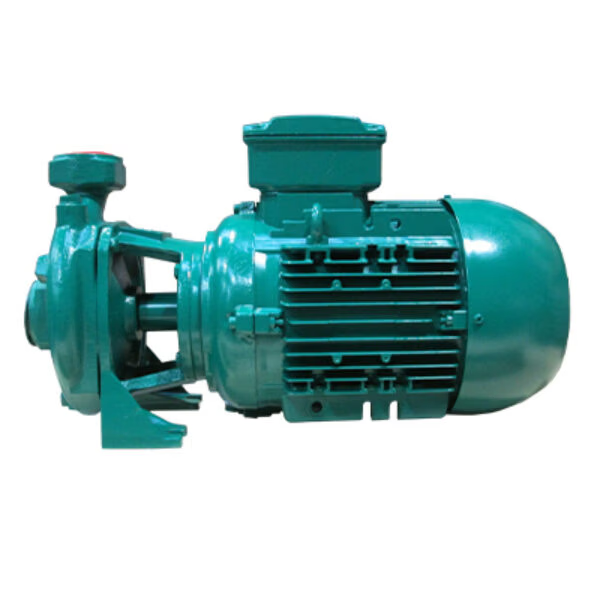Marine seawater pumps are indispensable components of any vessel or offshore platform. Whether you’re a shipowner, marine engineer, or procurement specialist, understanding the intricacies of these pumps is crucial for ensuring optimal performance, longevity, and cost-effectiveness. In this comprehensive guide, we’ll explore everything you need to know about marine seawater pumps, from their functions and types to key buying considerations and maintenance tips.
What is a Marine Seawater Pump?
A marine seawater pump is a specialized device designed to move seawater for various onboard applications. These pumps are engineered to withstand the harsh marine environment, including exposure to saltwater, extreme temperatures, and constant vibrations. They play a vital role in engine cooling systems, ballast operations, firefighting, and general service water supply.
Key Applications of Marine Seawater Pumps
- Engine Cooling: Seawater pumps circulate water to cool the ship’s main engine, generators, and auxiliary machinery.
- Ballast Water Management: They transfer seawater to and from ballast tanks to maintain the vessel’s stability and trim.
- Firefighting Systems: These pumps supply seawater to fire hydrants and sprinkler systems, ensuring onboard safety.
- Bilge Pumping: They remove seawater that accumulates in the bilge, preventing flooding and maintaining operational efficiency.
- General Service: Seawater pumps are also used for deck washing, tank cleaning, and other onboard tasks.
Types of Marine Seawater Pumps
Choosing the right type of pump is critical for meeting specific operational needs. Here are the most common types:
- Centrifugal Pumps: Ideal for high flow rates and moderate pressures, these pumps are widely used for cooling and ballast operations.
- Positive Displacement Pumps: Suitable for applications requiring precise flow control, such as fuel transfer and lubrication systems.
- Submersible Pumps: Designed to operate underwater, these pumps are often used for bilge pumping and underwater applications.
- Axial Flow Pumps: Best for high-volume, low-pressure tasks like ballast water transfer.
Key Features to Look for in a Marine Seawater Pump
When selecting a seawater pump, consider the following features to ensure reliability and performance:
- Corrosion Resistance: Look for pumps made from materials like bronze, stainless steel, or titanium, which can withstand saltwater exposure.
- Durability: The pump should be robust enough to handle vibrations, shocks, and temperature fluctuations.
- Energy Efficiency: Opt for pumps with high-efficiency ratings to reduce fuel consumption and operational costs.
- Ease of Maintenance: Choose pumps with accessible components for easy inspection, repair, and replacement.
- Compliance with Regulations: Ensure the pump meets international maritime standards, such as those set by the International Maritime Organization (IMO).
Top Brands in the Marine Seawater Pump Industry
Several reputable manufacturers are known for producing high-quality marine pumps. Some of the leading brands include:
- Grundfos: Renowned for energy-efficient and durable pumps.
- Wärtsilä: Offers a wide range of pumps for various marine applications.
- Xylem (Goulds Pumps): Known for innovative and reliable pumping solutions.
- KSB: Provides robust pumps designed for harsh marine environments.
- SPX Flow: Specializes in high-performance pumps for critical applications.
Buying Guide: How to Choose the Right Marine Seawater Pump
Here’s a quick checklist to help with your purchase:
- Assess Your Needs: Determine the specific application (cooling, ballast, firefighting, etc.) and required flow rate.
- Check Material Compatibility: Ensure the pump materials are resistant to seawater corrosion.
- Evaluate Energy Efficiency: Look for pumps with high efficiency ratings to save on operational costs.
- Consider Maintenance Requirements: Choose pumps that are easy to maintain and repair.
- Verify Compliance: Ensure the pump meets relevant maritime regulations and standards.
- Compare Prices and Warranties: Balance cost with quality and check for warranty coverage.
Maintenance Tips for Marine Seawater Pumps
Proper maintenance is essential to extend the lifespan of your marine pump and avoid costly repairs. Follow these tips:
- Regular Inspections: Check for signs of corrosion, wear, and leaks.
- Clean Intake Filters: Remove debris and marine organisms to prevent clogging.
- Lubricate Moving Parts: Ensure all moving components are properly lubricated to reduce friction.
- Monitor Performance: Keep an eye on flow rates and pressure levels to detect issues early.
- Schedule Professional Servicing: Have a certified technician inspect and service the pump periodically.
Why Invest in a High-Quality Marine Seawater Pump?
Investing in a reliable seawater pump offers several benefits:
- Enhanced Operational Efficiency: Ensures smooth and uninterrupted operations.
- Reduced Downtime: Minimizes the risk of pump failure and associated delays.
- Cost Savings: Energy-efficient pumps lower fuel consumption, while durable pumps reduce repair costs.
- Safety and Compliance: High-quality pumps meet safety standards and regulatory requirements.
Conclusion
Marine seawater pumps are vital for the safe and efficient operation of any vessel or offshore platform. By understanding their functions, types, and key features, you can make an informed decision when purchasing or maintaining these pumps. Whether you’re a buyer looking for the best product or a user aiming to optimize performance, this guide provides the insights you need to succeed.
For more information or to explore a range of high-quality marine seawater pumps, visit BESQO Marine. Investing in the right pump today will ensure smooth sailing for years to come.
